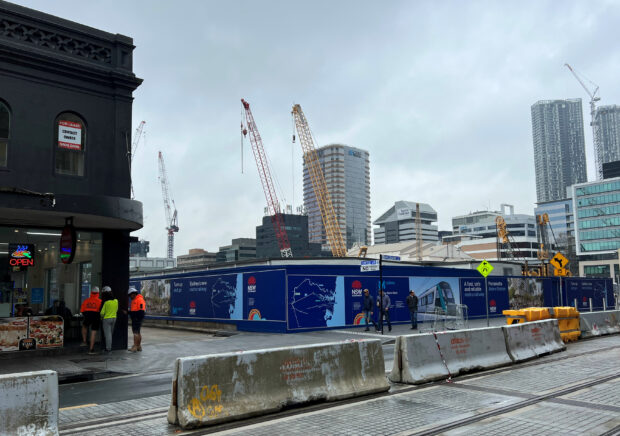
A general view of a construction site where many tall apartment buildings have been constructed in recent years, in Parramatta, Sydney, Aug 14, 2023. REUTERS/Stella Qiu/File photo
SYDNEY – Australia’s economy grew at a snail’s pace in the December quarter as a punishing squeeze on household incomes brought consumer spending to a standstill, reinforcing market bets that the next move in interest rates will be down.
Data from the Australian Bureau of Statistics on Wednesday showed real gross domestic product (GDP) rose 0.2 percent in the fourth quarter, under forecasts of 0.3 percent. That compared with a upwardly revised 0.3 percent expansion in the prior quarter.
Annual growth slowed to 1.5 percent, down from 2.1 percent the previous quarter and the lowest since early 2021, when the economy was emerging from a pandemic-driven recession.
In a telling sign of the softness in domestic demand, household spending did not add to economic growth at all in the fourth quarter, as a 0.7 percent rise in spending on essentials was offset by a 0.9 percent fall in discretionary spending.
READ: Australia inflation cools, confidence of ‘soft landing’ grows
ABS data showed households are spending more on electricity, rent, food and health while cutting back on hotels, cafes and restaurants as well as things like new vehicle purchases and clothing and footwear.
‘Need to respond’
“Australian consumers are suffering from higher interest rates and cost of living pressures, while the rate of housing investment remains in the doldrums,” said Deloitte Access Economics partner Stephen Smith.
“There is simply not enough demand in the Australian economy to justify the RBA’s claim about ‘homegrown’ inflation… Monetary and fiscal policy need to pivot away from containing inflation to stimulating economic growth.”
READ: Australia’s January inflation holds at two-year low
The Reserve Bank of Australia has raised interest rates by a whopping 425 basis points since May 2022 to tame inflation, and has not ruled out another rise given the concerns about persistently high services inflation.
The central bank had expected the economy to slow to an annual 1.5 percent by the end of the last year and to 1.3 percent by mid 2024.
For the December quarter, GDP per capita fell 0.3 percent, shrinking for three straight quarters in the longest declining streak since 1982.
While the household saving ratio did rebound to 3.2 percent, it was still subdued after sitting at 1.9 percent in the previous quarter.
Growth driver
Net trade was a big driver of growth, with a pull-back in imports – thanks to Australians spending less money overseas – adding 0.7 percentage points to fourth-quarter GDP growth.
“Addressing inflation is still our primary concern, but these numbers show that the balance of risks in our economy are shifting from inflation to growth,” said Treasurer Jim Chalmers at a briefing.
“If you look at these quarterly figures, if you look at the way inflation is coming off in welcome and encouraging ways, we need to respond to that,” said Chalmers. The government’s reworked stage 3 tax cuts will commerce in July this year to the relief of households.
Markets are confident that the RBA’s tightening cycle is over as inflation has eased to a two-year low of 3.4 percent, though future pricing show that any rate relief won’t come until around August.

